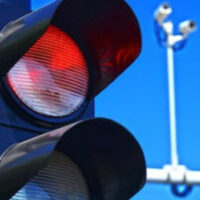Determining Liability in Red Light Accidents

Liability in a red light accident typically hinges on determining who had the legal right-of-way at the time of the collision. Florida law requires all drivers to obey traffic signals, and a violation of this rule often serves as strong evidence of negligence. However, other factors may also influence liability, making a thorough investigation critical.
Traffic Signal Violations
Traffic signals provide clear guidelines for determining the flow of traffic. If a driver enters an intersection after the light has turned red, they are typically at fault. Evidence such as eyewitness accounts, surveillance footage, or traffic camera recordings can help establish whether a driver violated the signal.
Florida’s Comparative Negligence Rule
Florida follows a modified comparative negligence system, which means that liability may be shared between parties based on their percentage of fault. For example, if both drivers entered the intersection while the light was yellow but one was speeding, liability may be apportioned in some instances. More specifically, if a driver is found less than 50% at fault, he or she may still recover damages proportional to the other party’s level of responsibility. If, however, the driver is found to be more than 50% at fault, his or her claim is barred, and he or she cannot recover any damages.
Other Contributing Factors
Liability in red light accidents can also be influenced by external factors that go beyond driver behavior. For instance, road design or maintenance issues can play a significant role. Poorly maintained traffic signals, confusing signage, or obstructed views at intersections may create hazardous conditions that contribute to accidents. In such cases, a company may be responsible for the obstruction or government entities may be responsible for maintaining the roads and traffic systems could be held partially or fully liable for failing to address these dangerous conditions.
Another factor that can impact liability is vehicle defects. Mechanical failures, such as faulty brakes, defective steering systems, or malfunctioning acceleration controls, may prevent a driver from stopping at a red light. If a vehicle defect is determined to have caused or contributed to the accident, the manufacturer of the vehicle, or a repair shop responsible for inadequate maintenance, could be held accountable for the resulting damages.
Evidence Used to Prove Fault
To establish liability in a red light accident, various types of evidence can be used, including:
Traffic Camera Footage
Many intersections in Florida are equipped with red light cameras, which can capture footage of vehicles running red lights and provide crucial evidence in determining fault.
Also, nearby businesses may have surveillance cameras which captured the accident.
Eyewitness Testimony
Statements from witnesses who saw the accident can help confirm which driver violated the traffic signal.
Accident Reconstruction
Experts in accident reconstruction can analyze skid marks, vehicle damage, and other factors to determine how the collision occurred.
Police Reports
Law enforcement officers who respond to the scene will typically document their findings in a report, including any citations issued for traffic violations.
Vehicle Dashcams
- Footage from dashcams can provide a clear view of the events leading up to the accident.
Injuries and Damages in Red Light Accidents
Red light accidents are often high-speed collisions, leading to severe injuries and extensive property damage. Common injuries include:
- Traumatic Brain Injuries (TBIs)
- Spinal Cord Injuries
- Broken Bones
- Whiplash and Soft Tissue Injuries
- Lacerations and Contusions
Victims may be entitled to recover compensation for:
- Medical Expenses: Past, present, and future costs of treatment.
- Lost Wages: Compensation for income lost due to missed work.
- Pain and Suffering: Non-economic damages for physical and emotional trauma.
- Property Damage: Costs to repair or replace a damaged vehicle.
Steps to Take After a Red Light Accident
If you are involved in a red light accident, taking the following steps can help protect your health and legal rights:
Call Law Enforcement
Report the accident to the police and request that they document the scene and issue a report.
Seek Medical Attention
Even if injuries seem minor, get checked by a medical professional. Some injuries, like whiplash or internal trauma, may not be immediately apparent.
Gather Evidence
If possible, take photos or videos of the accident scene, vehicle damage, and traffic signals. Collect contact information from witnesses.
Avoid Admitting Fault
Be cautious when speaking to other drivers, witnesses, or insurance adjusters. Stick to the facts and avoid making statements that could be interpreted as admitting fault.
Consult an Attorney
- An experienced West Palm Beach red light accident attorney can help you navigate the claims process, gather evidence, and pursue fair compensation.
Contact Smith, Ball, Báez & Prather
Determining liability in a red light accident is not always straightforward. While drivers who run red lights are often presumed at fault, other factors—such as comparative negligence or road design—can complicate the situation. A thorough investigation and strong legal advocacy are crucial to ensuring that victims recover the compensation they deserve.
If you’ve been injured in a red light accident, the attorneys at Smith, Ball, Báez & Prather are here to help. We have extensive experience handling complex auto accident cases and will work tirelessly to secure the compensation you deserve. Contact us today for a consultation to discuss your case and legal options.
Source:
leg.state.fl.us/Statutes/index.cfm?App_mode=Display_Statute&URL=0300-0399/0316/Sections/0316.075.html
